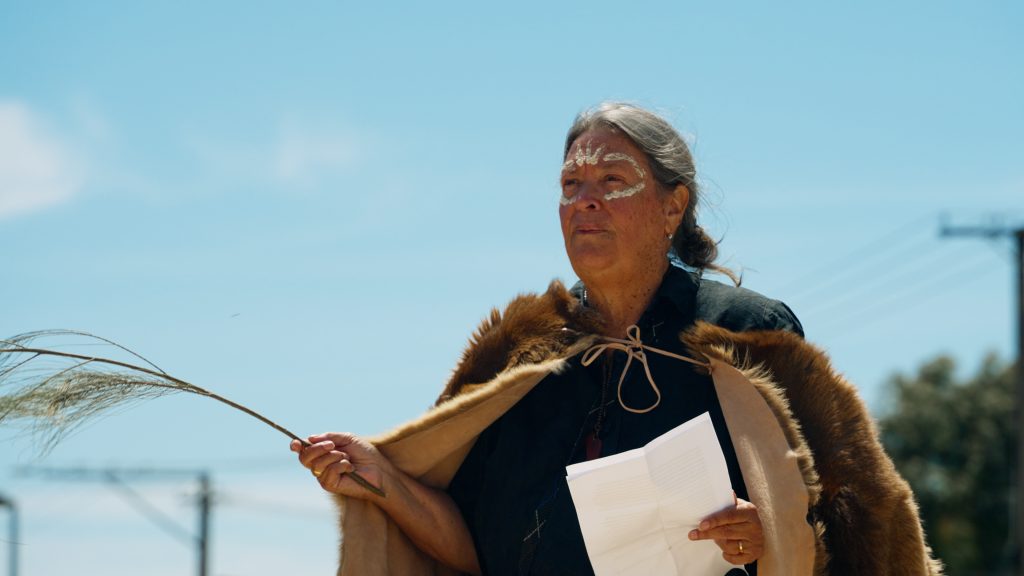
Pawur – Maria Creek
Martu karu, Nhari ngayn Irene, Ngathu Meintangk, Bunganditj, Potaruwutj, ba Tanganekald, wulnuw-itj-ngar Tangalun ba Wurtai ba Welpulprap
Greetings, my name is Irene Watson, I belong to the Meintangk, Bunganditj, Potaruwutj, and Tanganekald First Nations Peoples, of the south east country
We began our gathering with a call to Mraad and Ngamath to land and sea for permission to be on country. This is our ancient way, to seek permission before we come onto country.
Today we bring respect to Meintangk history, to Mraad and Ngamath and our old people who have cared for land and sea country for thousands of years. I respectfully greet our Elders and SA Governor Frances and all of you who have travelled, and also to our locals and First Nations across Australia.
For self and family our engagement and leadership with Telling the Whole Story Project has been to memorialise our Meintangk history. We have taken up this space to speak about our ways, connections to country, visions and dreams for the future, one in which all children have the right to live safely and securely in a sustainable environment. These were the rights Meintangk People held before colonisation and we all have an obligation to safeguard and promote those same rights for the future.
The signage photo title survivors of the Kingston SE Tribe is a photo held by the SA Museum. The noted survivors have names and are our relations, for I am the great, great granddaughter of Putjuwi, her colonised name was Catherine Gibson. Putjuwi is the senior lady in the photo and sits with her husband, son and daughter in law and grandchildren, who are the brother and sister of my grandmother Irene Gibson. That photo was taken in Kingston SE in the late 1800s. They survived one of the most violent and brutal genocides known to humanity. And they are my ancestors who lived their lives here in this special place. My mother Noeline Gibson was born in the home of her grandmother Amy Gibson, that house was replaced by the Ampol garage, across the road. In the 1980s my mother led, the removal of the town dump which was burying our Aboriginal camp where Katherine Gibson lived and our ancestors were buried, she also led repatriation of our old people, the protection of sites and heritage and was a founding member of the Aboriginal Heritage committee from the 1980s. She was the foundational chair of Kungari Aboriginal Heritage Committee until her passing in 2011, her work led caring for country.
I am privileged and fortunate to have a mother who against all odds not only survived but recovered much that was in need of recovery. I see recovery of our Aboriginal ways as being critical to our future. Just as we have recovered the songs of the ancestor who threw the kangaroo skin out across the entrance to Lacepede Bay to calm the stormy waters. Now with climate change on us, this knowledge of the giant kelp forest still protects us today.
Paul will talk about the National Trust Maria Creek plaque while our sign references this history. In this project the way in which we engaged over a point of conflict and different versions of history was to agree to a two-way approach to the telling of our shared colonial history. As First Nations we led as the authors of our stories and lives. These interpretative signs provide introductory information about our Meintangk history, which is mirrored in our web site TTWS. This web site is a work in progress and is also being launched today. Our vision has been to expand understanding and exposure to Aboriginal centred knowledges of history and make it accessible to all peoples across regional SA, and locally to Kingston SE. This project is both innovative and inclusive and will enable two-way discussions and with-it truth telling to occur.
The monument plaque is sited at the gateway to Kingston SE where travellers frequently stop to take a break. Our TTWS signs will respond to questions from both locals and visitors who frequently request information about the Aboriginal history of Kingston. This open-air installation is a history space, but it is also a space which respects an obligation to the environment. Aboriginal history is further informed by a native vegetation landscape – the area is replanted with native vegetation Indigenous to the Maria Creek. This recovery of native vegetation is important work, and we acknowledge the volunteers and local school students who participated in its planting. We have a dream of a two-way partnership with the school, volunteers, the local council and local community groups. In growing up the native vegetation of the Parwu Maria Creek.
This Project makes a significant contribution to creating space for truth telling. The truth of our violent genocidal Aboriginal history and our survival must be told in our voices. In the retelling we need to recover our Aboriginal history, laws, culture, language, and obligations as carers for Country.
If we can come together respectfully in a two-way approach Wanga Kalawa, listen and learn, care and share then we can create safer futures for all Peoples.
Acknowledgements
- Elders, Meintangk First Nations Peoples, our relations, Bunganditj, Portarutuwj and Tanganekald –
- National Trust of SA partnership,
